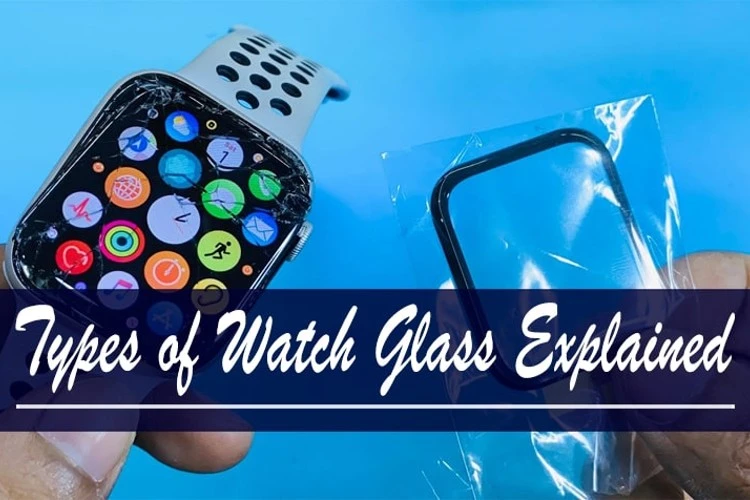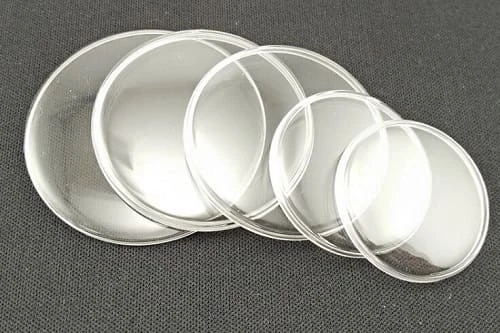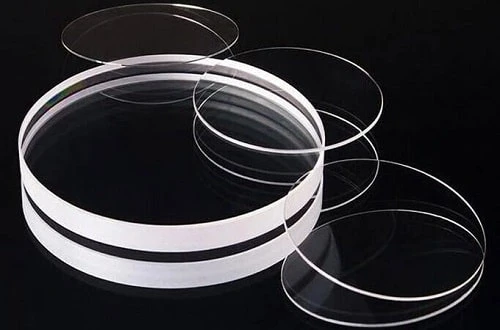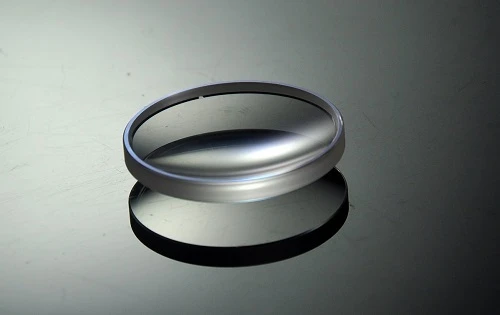by Kimberly Hill
When it comes to wristwatches, we often don’t give a lot of thought to the glass. Yet, it is one of the most important things that make up a watch.
It is not only responsible for protecting the dial and everything inside it, but it also adds a certain flair to the design. However, the glasses are not always made of the same materials.
If you are curious as to what those are and what the differences are, you have come to the right place. In this types of watch glass explained article, I will be telling you all you need to know about these different types of glasses.

Primarily, there are three different types of watch glasses. These are acrylic crystal, mineral crystal, and sapphire crystal. Each of these has its own distinct properties, which makes them suitable for certain purposes.
Below I have provided in-depth knowledge about the three glasses and even discussed their advantages and disadvantages. Take a look!
The first one that we will be looking at is Acrylic glass. It is the most affordable one out of the three and is also known as Perspex or Hesalite. The glass has been constructed using a type of plastic known as polymethyl methacrylate. Although soft, this plastic tends to be quite durable as well.
This is one reason why acrylic is a preferred choice for wristwatches; the flexible nature allows the manufacturer to manipulate the glass into any sort of shape needed.
Its pliability allows it to take on different kinds of forms, be it just a typical circular shape or something concave like a dome shape. Acrylic is also not very reflective, which makes it a good choice for watches.

However, that is not the only reason why many watchmakers prefer this glass. Acrylic is also the cheapest option when it comes to making watch glass. They can use it for mass production of watches which cuts down the manufacturing cost.
Even though the glass is greatly resistant to impact and difficult to break, it is actually quite prone to scratches. You will mostly find acrylic crystals on cheaper watches and also children’s watches; this is due to the low manufacturing cost.
Typically, you will see the glass being used on traditional watches and retro-looking ones.
Let us take a look at some of the advantages of acrylic glass:
The glass on your watch is meant to protect the dial and display inside. That is why it is very important for it to be durable. Despite its flexibility, acrylic is known for being good at resisting impact.
Acrylic can be polished quite easily, which can come in handy to get rid of marks since it is also susceptible to scratches. However, it does not apply to deeper and heavier scratches, rather the minor ones.
If the glass on your wristwatch is too reflective, it can be difficult for you to tell the time. This is where acrylic comes in handy since it does not have a very reflective surface.
Although acrylic crystal can be great, it does come with some disadvantages as well:
The biggest downside to this thing is its low resistance to scratches. You never know when you might accidentally hit something with your watch, so there is always a risk that it can get scratched.
Speaking of scratches, if it is too deep and cannot be polished off, the mark may become permanent. Over time it can start to affect the visibility of your watch. Not just that, the glass apparently also tends to get cloudy over time, so that can be an issue as well.
Despite all its greatness, people often do not like the look of acrylic. They believe it looks somewhat cheap, and that can affect the appearance of the watch.
At the moment, mineral glass is the most common choice for watch glass on the market. This thing is often known as Hardlex, and it is often the preferred material for many beginner watch brands. It sits exactly in the middle, with its cost being higher than Acrylic but lower than Sapphire.
The glass is made of silica which, unlike acrylic, makes it quite resistant to scratches. You may often see glass similar to this on your windows. These types of glasses look similar and can also have similar properties.

Unlike acrylic, however, this thing does not come with good impact resistance. Exposing it to extreme conditions, hot or cold, can make the glass shatter. In Mohs hardness scale, it ranks somewhere around 5 out of 10.
You will mostly find mineral glass on mid-range watches. It does not at all look cheap, and in a sudden glimpse, you may even mistake it for a sapphire glass in a watch. If you feel a sapphire glass watch is out of your budget but you still want something a bit fashionable, a mineral crystal watch can be a good option.
Here are some of the pros when it comes to mineral glass:
Mineral glass is quite competent when it comes to resisting scratches. As long as the cut is not too deep, this glass can easily resist scratch marks.
Much like acrylic, mineral glass is also pretty easy to polish. This also helps to keep the glass free from scratch marks.
Mineral glass looks quite similar to sapphire glass, which means it also has a pleasing appearance. It also does not look cheap, which makes it a preferred choice for many.
Mineral glass is not short of its cons either:
Compared to the other two glasses, mineral provides the least amount of protection against impact. It can crack quite easily upon impact, and in certain cases, may even shatter completely.
Speaking of shattering, one thing to keep in mind if you want to avoid that is that you should never expose the glass to extreme heat and extreme cold.
Although it is more affordable than sapphire glass, it is still more expensive than acrylic. This can be an issue for anyone on a tight budget.
Last but definitely not least, we have the Sapphire crystal. It is the most desirable option for a glass watch and so expensive that it is typically used in high-end, expensive watches.
Sapphire glass is extremely tough, having a hardness of 9 out of 10 on the Mohs scale. However, watch manufacturers do not really use natural sapphire since they can be challenging to work with and because they are quite expensive.

Instead, the sapphire glass you see on watches is actually man-made, known as synthetic sapphire or corundum. It forms a very hard Aluminum oxide which makes the glass tough and extremely resistant to scratches. In fact, even if you try, you will have a very hard time trying to get a scratch on the crystal.
Sapphire crystal has a very pleasant appearance which makes its watches very appealing to many. So not only does it look great, but it also provides good protection, and that makes it a popular choice for high-end watches.
Below are some of the advantages sapphire glass comes with:
Due to its tough surface and body, sapphire glass does an excellent job keeping scratches away. The only way you can easily leave a mark is if you were to use a diamond to scratch it.
As mentioned earlier, this a pretty tough material, which means it is good at resisting impacts.
One of the reasons why sapphire glass watches are so well-loved is because it has an attractive appearance. It gives the watch a pleasant aesthetic and looks just as expensive as it actually is.
The downsides of sapphire crystal:
Although sapphire glass is mostly good at resisting impact, it can also completely shatter if the force is heavy enough. That is why you may sometimes see some disastrous results with this thing if it gets hit really hard.
The material has a highly reflective surface, which can make it difficult to see the time, especially under direct sunlight.
Sapphire crystals can be challenging to repair, which can be an issue for some since it is also very expensive.
So, that was all I had to share with you about these three types of watch glass. I hope this article was able to get the types of watch explained for you.
If you are wondering which one to go for, it all comes down to your preference and budget. Do you prioritize durability over appearance? Is the expense an issue? These are the things you should ask yourself when making a decision.

About Kimberly Hill
Now it is just me, Kimberly Hill living in New York city, N.Y.
Loves to blog about various aspects of life that matter most.
Received the BA degree in Art History from Stanford University of California.
 |
 |
 |
 |
Popular Posts